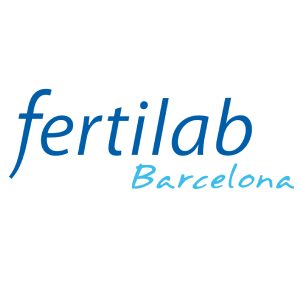Introduction to Heterologous Fertilization
What is heterologous fertilization
Heterologous fertilization represents a method of assisted reproduction in which gametes (sperm or eggs) from an external donor are used. This process is implemented when an individual or a couple are unable to conceive a child due to fertility-related issues. In this procedure, the sperm or egg donation is used to fertilize an egg in a laboratory, producing an embryo which is subsequently implanted into the woman’s uterus.
Índice de contenidos
How heterologous fertilization emerged
Heterologous fertilization has deep roots in the history of reproductive medicine. Research and technological advancements throughout the 20th century have allowed for the development of various assisted reproduction techniques, including in vitro fertilization (IVF), which forms the basis for heterologous fertilization. With the evolution of technology and gaining new knowledge about human reproduction, physicians have been able to further refine these techniques, making heterologous fertilization an increasingly accessible and safe choice for couples or individuals wanting to have a child.
Who can benefit from heterologous fertilization
Various categories of people can benefit from heterologous fertilization. Heterosexual couples in which one or both partners have fertility issues make up a large group. These issues can be related to the quality or quantity of sperm or eggs, or the presence of medical conditions making natural conception difficult or impossible.
Single women or same-sex couples can also opt for heterologous fertilization if they wish to have a child. Lastly, heterologous fertilization can be used by anyone who has a genetic condition they do not wish to pass onto their child.
Therefore, heterologous fertilization represents a valuable resource for all those individuals and couples who, for various reasons, cannot conceive naturally, but have a desire to have a child and start a family.
The process of heterologous fertilization
Choosing the donor
The process of heterologous fertilization begins with the selection of the gamete donor. The criteria for selection can vary based on local regulations and clinic policies, but usually include a series of medical examinations, genetic tests, and psychological evaluations. The aim is to ensure that the donor is in good health and does not pass genetic diseases onto the future child. Moreover, in many cases, a donor is chosen who has physical characteristics and personal traits similar to those of the non-biological parent.
Preparation of the recipient
After the donor selection, the recipient (the woman who will carry the pregnancy) undergoes a preparation cycle. This includes the administration of drugs to stimulate ovulation and prepare the uterus for embryo implantation. This phase of the process requires careful medical monitoring and can last several weeks.
The medical procedure
Once the gametes are ready and the recipient’s body is prepared, fertilization can proceed. This happens in a laboratory, where the eggs are exposed to the donor’s sperm. If fertilization is successful, an embryo is formed.
After a period of growth in the laboratory, the embryo is transferred into the recipient’s uterus through a process called embryo transfer. This is an outpatient procedure that usually does not require anesthesia.
After the transfer, the woman is closely monitored for signs of pregnancy. If the implantation has been successful and the pregnancy progresses normally, the woman will give birth to the child as in a natural pregnancy.
This process, although it may seem complex, is carefully managed by a team of experienced professionals working together to ensure the best possible outcome for the mother and child.
Pros and Cons of Heterologous Fertilization
Advantages of heterologous fertilization
One of the main advantages of heterologous fertilization is that it paves the way to parenthood for those who cannot conceive naturally. This includes individuals with fertility issues, single women, same-sex couples, and those who run the risk of transmitting unwanted genetic conditions.
Moreover, the success of heterologous fertilization is substantially influenced by current medical technologies and techniques. With the support of specialized clinics and expert medical staff, the chances of conceiving via heterologous fertilization can be quite high.
Potential disadvantages and risks
Despite the advantages, heterologous fertilization is not without risks and disadvantages. As with all medical procedures, there are physical risks associated, including those related to fertility drugs, egg retrieval procedure, and embryo transfer. However, these risks are generally low.
There are also possible emotional and psychological risks. Some people may experience stress or anxiety related to the process, or may struggle with issues related to genetics and kinship.
Another aspect to consider is the cost. Heterologous fertilization can be expensive, and not all insurance plans cover the costs associated with assisted reproduction.
Lastly, there are ethical and legal issues to consider. Laws regarding heterologous fertilization vary greatly from one country to another and even within the same country. This can affect aspects like donor anonymity, the number of embryos that can be transferred, and the child’s right to know their genetic origins.
Ultimately, the decision to proceed with heterologous fertilization should be made after careful consideration and discussion with reproductive health professionals and counselors.
Additional questions and answers on heterologous fertilization, with a focus on the UK and the US
Is heterologous fertilization legal in the UK and the US?
Yes, heterologous fertilization is legal in both the UK and the US. However, specific laws and regulations can vary. In the UK, heterologous fertilization is regulated by the Human Fertilisation and Embryology Authority (HFEA). In the US, laws vary from state to state, and the process is generally less regulated.
Is it possible to remain anonymous as donors in the UK and the US?
In the UK, donor anonymity is limited. Children born through heterologous fertilization have the right to know the identity of their donor once they reach 18 years of age. In the US, laws vary from state to state, but in many cases, it is possible for a donor to remain anonymous if they wish.
How much does heterologous fertilization cost in the UK and the US?
The costs of heterologous fertilization can vary greatly in both the UK and the US, depending on the chosen clinic and the specific treatments required. In the UK, the cost can range from a few thousand to over ten thousand pounds. In the US, the costs can be even higher, due to the absence of a national healthcare system covering such procedures.
Is there an age limit for heterologous fertilization in the UK and the US?
In the UK, the HFEA does not set a specific age limit for heterologous fertilization, but many clinics do not accept women over the age of 50 as recipients. In the US, there is no legal age limit for heterologous fertilization, but clinics may have their own guidelines based on medical and ethical considerations.
Is it possible to choose the donor in the UK and the US?
Yes, in the UK and the US it is generally possible for recipients to be involved in choosing the donor. Clinics usually provide detailed information on potential donors, which can include their age, height, weight, ethnicity, education, occupation, personal interests, and motivations for donation.




